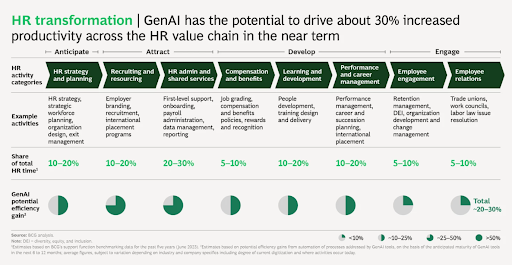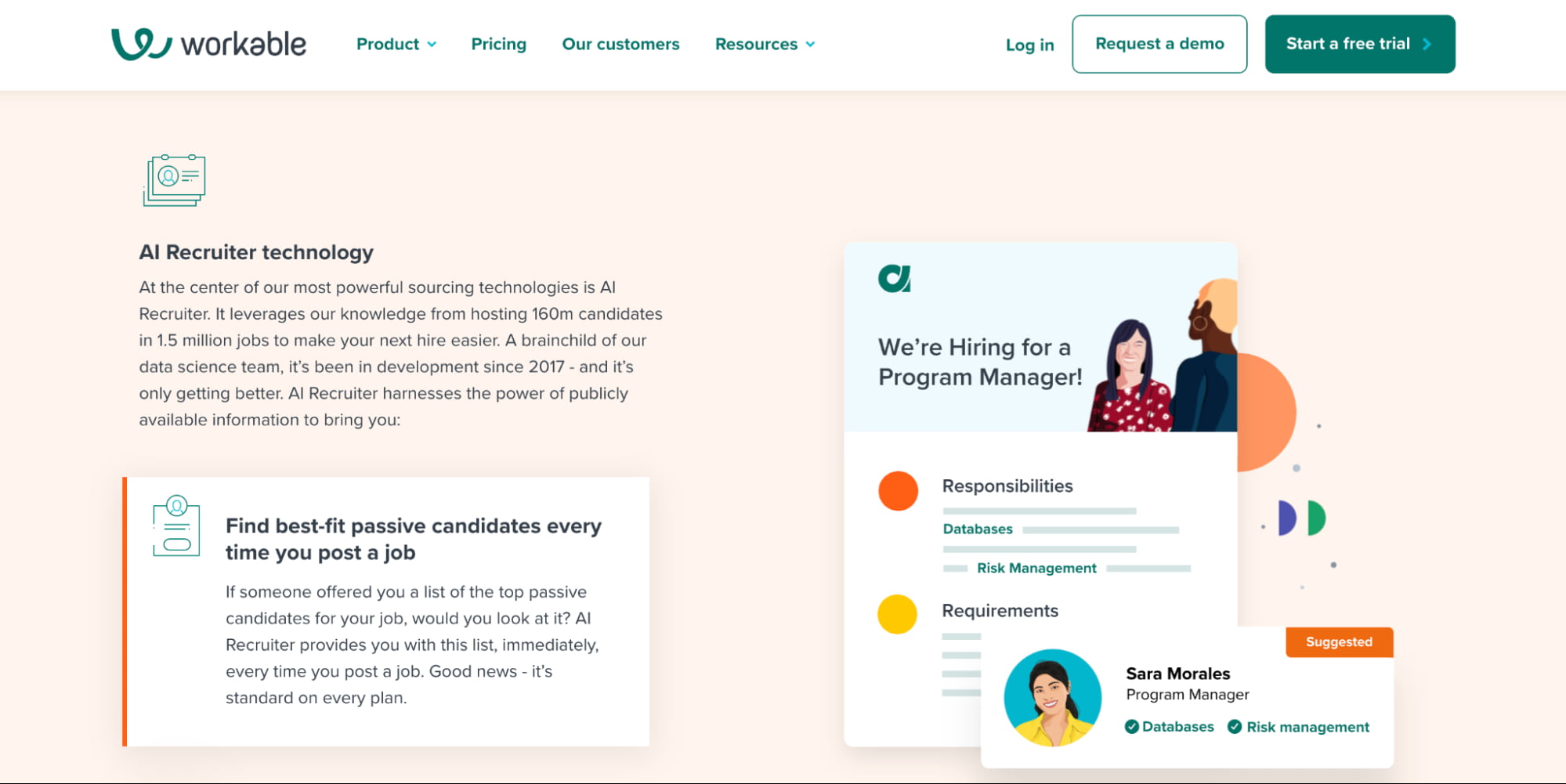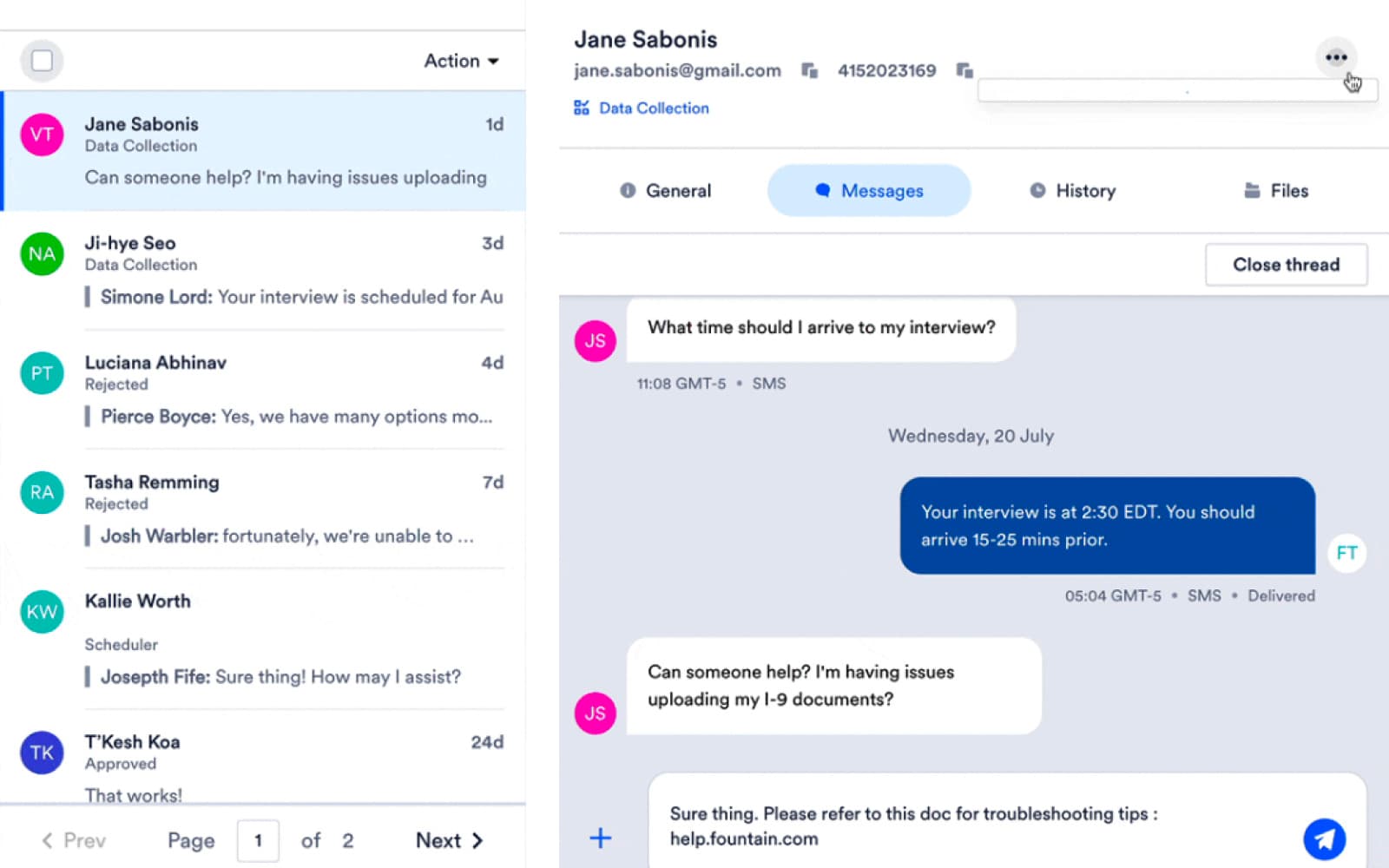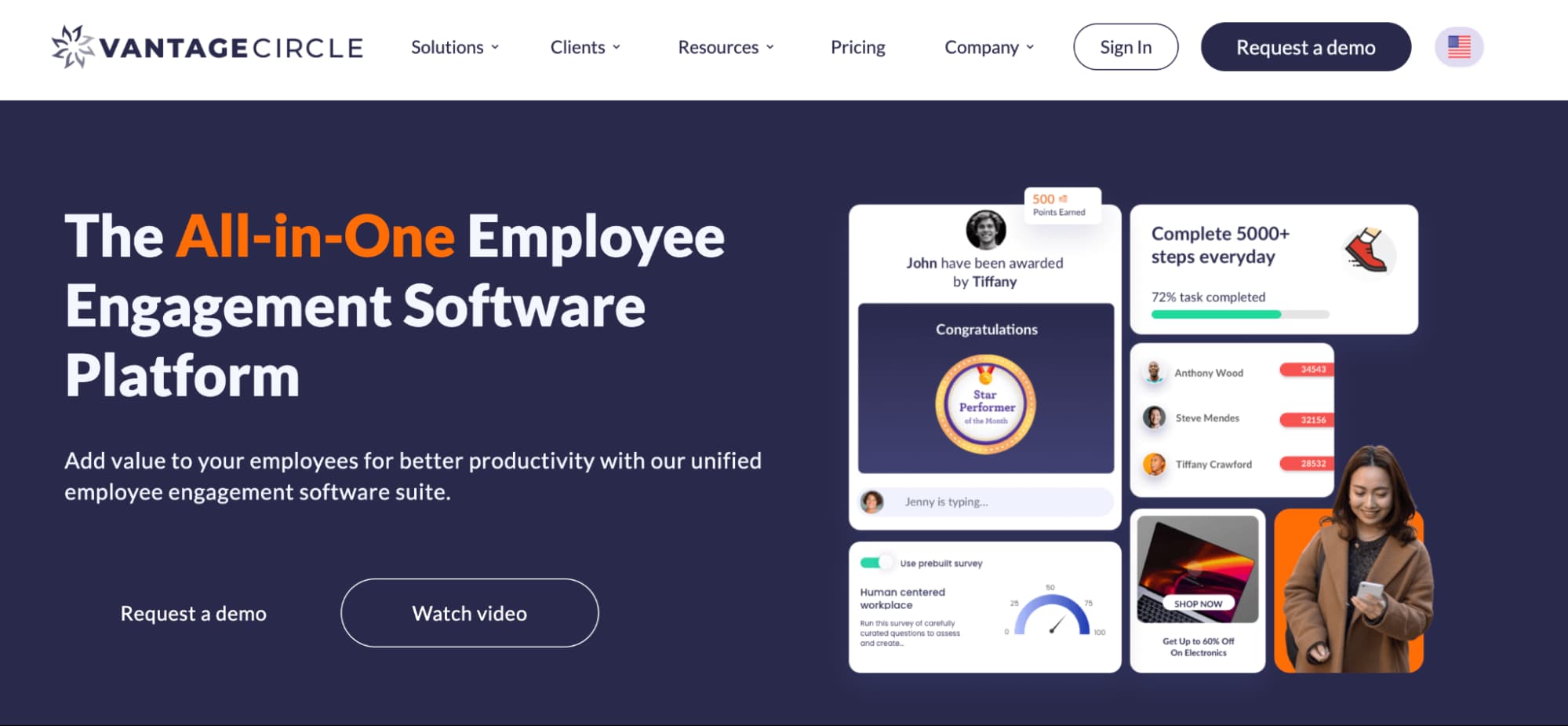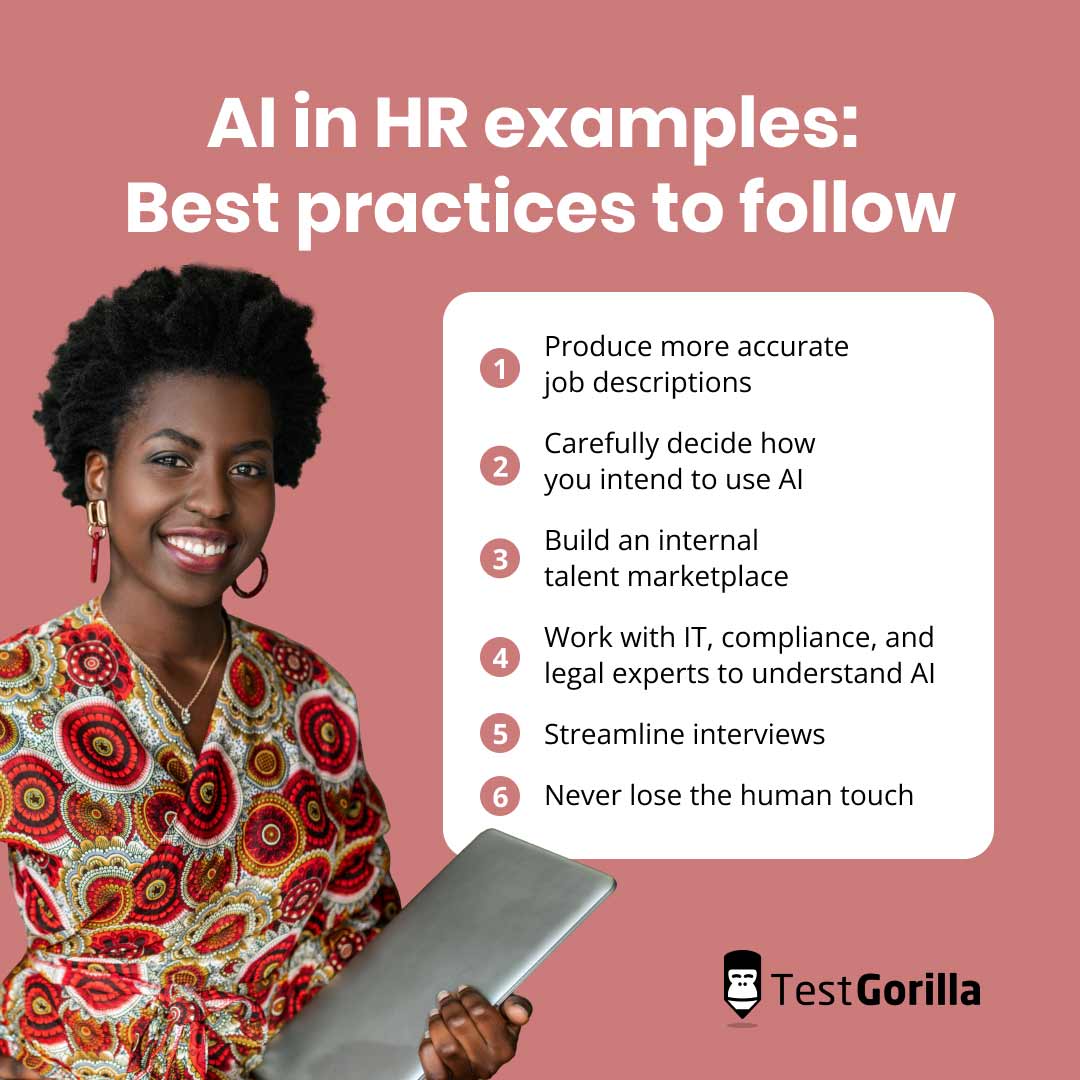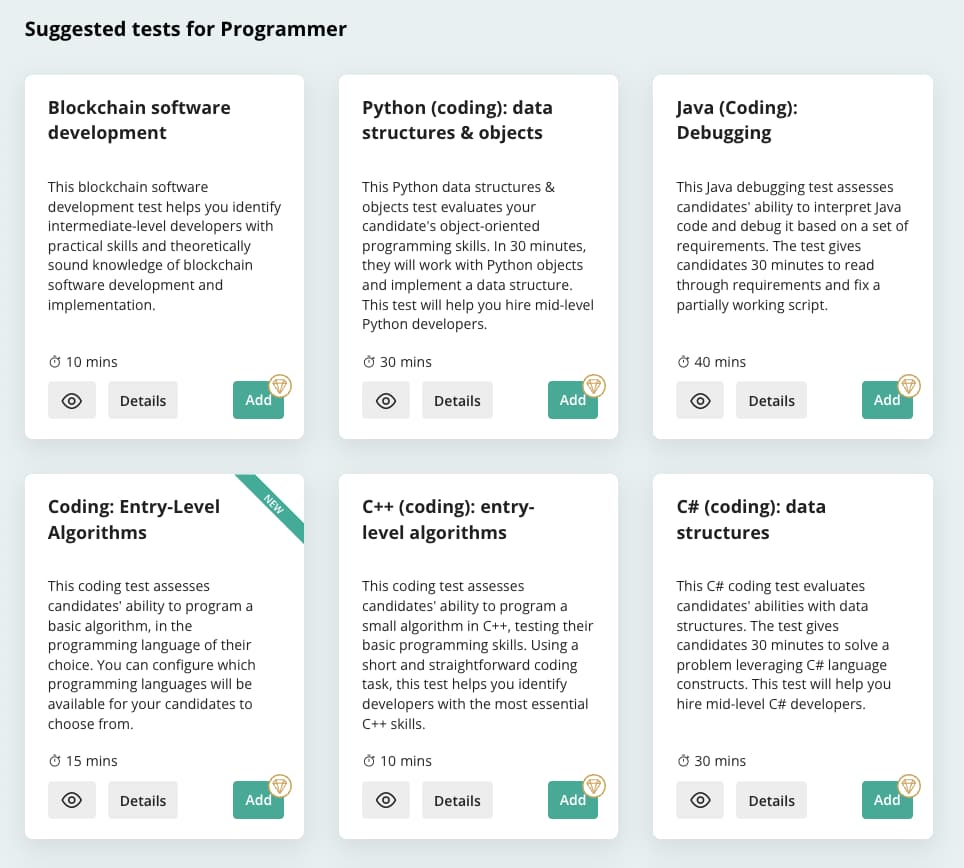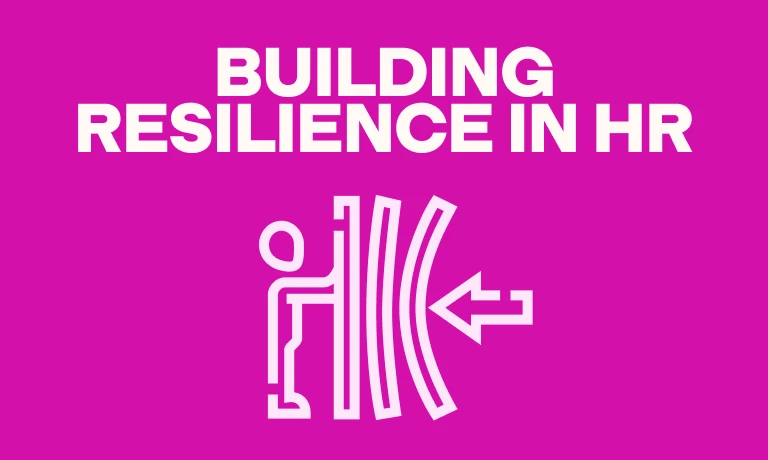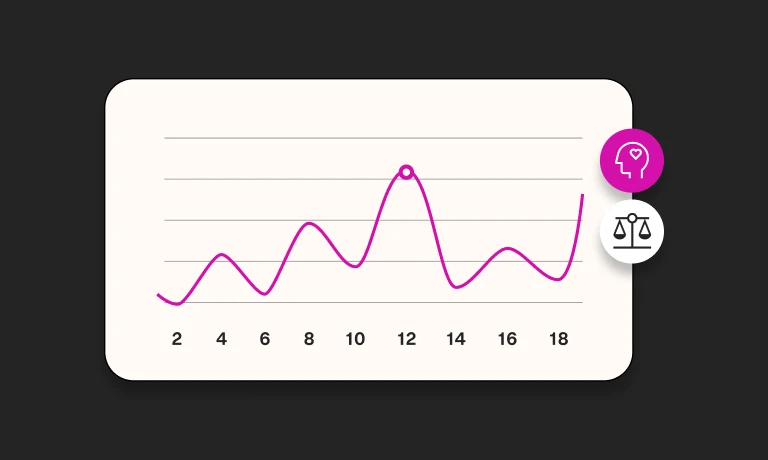Artificial intelligence is transforming the way companies hire and recruit. At least 79% are already using the technology to their advantage.[1]
This is helping to cut down tedious HR admin, improve candidate experiences, and plan out workforces across many industries.
However, if you’re part of the 21% not using AI in HR, you risk losing talent to your competitors, wasting time and money through mis-hires, and leaving positions unfulfilled.
With the right AI tools and HR strategies, however, you can:
Easily match people to roles based on skills and culture add
Create engaging onboarding processes
Cut down time to hire
Boost employee engagement and productivity
Below, we explore why AI should be at the core of your HR technology efforts, how to use it for the best results, and which tools to invest in.
What is AI in HR?
Artificial intelligence (or AI) in HR refers to technology that performs tasks that typically need human input.
In HR, it refers to intelligent technology that helps to streamline the recruitment process, cut time-consuming tasks, fortify hiring decisions, and improve candidate experiences.
The rise of AI availability in the early 2020s arguably made machine learning one of the fastest-growing HR technology trends.
What HR functions can AI help with?
Introducing generative and predictive AI into your HR tech stack can help you automate and manage:
Candidate sourcing and hiring
Matching people to roles
Data driven recruiting strategies
Job description writing
Data tracking for performance reviews
Onboarding process scheduling
Exit survey collection and data collation
Skills analysis for learning and development opportunities
Workforce planning and growth strategies
Why are AI tools in HR important?
HR teams in all industries are considering AI predominantly for its time-saving potential. More than 85% of HR professionals believe AI could take over elements of the recruitment process.
Recruiters can automate time-consuming administration and spend more time getting to know their recruits, thus improving hiring quality and the candidate experience.
AI is becoming prominent in onboarding best practices, with 68% of companies using the tech to help welcome people into their roles.[2]
Again, AI could help in these circumstances by automating how information reaches new hires when scheduling onboarding.
AI helps HR further once recruits are fully onboard by sourcing objective data to measure performance.
Some AI tech analyzes skills trends and industry movements to better inform processes, while others help companies plan for future trajectories and needs.
From a quality perspective, AI further helps to minimize human mistakes, for instance, by reducing typos and organizational errors.
What’s more, the technology is helping to remove areas of potential bias in hiring, where human judgment could cloud objective decision-making.
The best insights on HR and recruitment, delivered to your inbox.
Biweekly updates. No spam. Unsubscribe any time.
5 benefits of generative AI in HR
Before we review some top tools, let’s briefly consider five benefits of AI in recruitment and HR.
1. Increased hiring efficiency and speed
Delegating tasks to AI in recruiting means some HR jobs take only a fraction of human speed to complete.
For example, AI can autonomously arrange and prioritize candidates, create task lists based on preceding data, and help schedule meetings.
It can also help streamline one-way communication to improve hiring efficiency for all parties.
Research shows up to 77% of businesses that use ChatGPT, a leading generative AI writer, reduce time spent writing job descriptions. Additionally, two-thirds use it to communicate with applicants during the hiring process.[3]
However, there are more benefits to pairing AI with the hiring process, and our guide to AI in talent acquisition goes into further detail.
2. Improved candidate experience
AI is improving two-way communication as much as it’s streamlining one-way candidate outreach.
Generative AI improves the candidate and employee experience by engaging with them throughout hiring.
For instance, an HR chatbot could interact with applicants and answer questions in real time, reducing HR staffing demand and appeasing candidates who need fast responses.
Chatbots and AI-driven email can relay messages automatically to candidates at each step in the hiring process, keeping them informed and reducing frustration.
Since these messages focus on objective data, there’s more transparency and less chance of bias and human error clouding communication. That said, there still needs to be some human oversight because there are concerns AI shows gender bias when left unmanaged.
Research shows that 70% of job applicants see the reduced response time through AI as an advantage. However, the same study claims a similar number of people are concerned that a lack of human judgment might impair experience quality.
3. Enhanced engagement and productivity
AI helps employees by optimizing work schedules in line with company needs, staff availability, and personal demands.
Users can automate schedules that support a healthier work-life balance, create more flexible working policies, and improve team productivity by inputting corporate and employee requirements into AI prompts.
According to a McKinsey case study, smart scheduling at a US power company saw job delays plummet by 67% and false job starts decrease by 80% over six weeks. AI scheduling further helped increase on-job work by 29%.[4]
4. Reduced administration
AI can take care of much of HR's tedious work, giving managers and recruiters more time to assess candidates individually (e.g. through structured interviews and assessing skills).
Research undertaken by the Boston Consulting Group suggests AI could increase HR productivity by up to 30% across the value chain in the next few years:
Moreover, HR teams spend up to 20% of their time on administrative tasks; in comparison, only 5% is spent on people analytics.[5]
Using AI frees up time that would have been spent sending emails and organizing data, enabling you to analyze the effectiveness of recruitment programs and foster closer relationships with candidates.
In general, 61% of people claim they're more efficient when using AI, 49% believe generative AI improves decision-making, and 89% suggest it could competently support up to half of their daily workloads.[6]
5. People are better matched to roles and opportunities
Up to 80% of companies plan to use AI to improve how they manage talent internally – and the same number want to use AI to monitor changing skill demands.[7]
Internal talent marketplaces powered by AI take data on employees’ skills and match them to opportunities available within the company.
For example, a marketplace AI could match people with high scores in basic math calculations to a junior role in accounting. From there, candidates can take further skills tests, such as in accounting software like Sage 300, to see if they’re ready for a lateral move.
AI uses machine learning in these scenarios to analyze large data sets on employees and roles within a business, look at patterns, and adapt to provide more suitable results based on user feedback.
Up to 73% of employees are interested in seeking internal roles and lateral moves, meaning using AI to manage automated workplaces can be a beneficial retention strategy.[8]
5 best AI tools in HR
Now you know the benefits of using AI and machine learning in HR, let’s look at a few top tools you could use to fortify your people management strategy.
We’ve arranged five top-rated and specialized AI platforms below, along with use cases, pricing, and public rating information.
Factors we considered
When building our AI tool shortlist, we considered six major elements:
Ease of use: Can managers get up to speed with the tool and train it easily?
Integration: Can the tool easily communicate with other systems you already use?
Pricing: Are there flexible options to suit your quarterly budgets?
Oversight: Is there a need for extensive human control, and can you spare it?
Reputation: How reputable is the end product with users?
Capability: Can the tool manage complex tasks and crunch large amounts of data?
The best AI applications in HR to consider
Tool | How it helps |
Workable | Scans LinkedIn, job boards, and ideal candidate profiles |
ChatGPT | Generates written content useful in role descriptions and employee communications |
IntelliHR | Pools employee data to help HR monitor headcount, department feedback, and staffing forecasts |
Fountain AI | Engages with job applicants by answering questions and keeping them informed about where they are in the process |
Vantage Circle | Tracks and reminds HR milestones and provides employee survey tools |
1. Workable: Best for finding candidates
Workable is AI-powered recruitment automation software that helps recruiters scour more than 200 job boards at once, with one-touch job posting functionality.
The software reads job descriptions and searches for people who align with the skills and role requirements listed – rounding up active job applicants and passive candidates.
Data scientists from Workable have tweaked the AI system to organize data available in the public sphere into insightful profiles, saving recruiters time on fact-finding and communicating with potential candidates directly.
Pros:
Easy to use
Millions of candidates and job posting opportunities
Integrates well with various software
Responsive customer care
Cons:
Some users claim the software suffers from slowdown
Priced with enterprises in mind
G2 Rating: 4.5 stars, 409 reviews
Pricing as of December 2023: From $149 per month
2. ChatGPT: Best for generating content and copy
ChatGPT was at the forefront of the global AI boom of the early 2020s thanks to its user-friendly content generation interface and parent company OpenAI’s commitment to improving its features.
Its content capabilities help HR write job descriptions, internal communications, and employee support materials through generative prompts. It's a conversational model dependent on its users' inputs, meaning the more detailed the request, the more helpful the content.
Pros:
Generates content with little prompting
Free to use with paid tiers available
Always learning and improving
Extremely easy to use from any device
Cons:
Can’t be relied on for factual accuracy
Doesn't completely replace human content nuances but satisfies repetitive content production needs
G2 Rating: 4.5 stars, 396 reviews
Pricing as of December 2023: From $0 per month
3. IntelliHR: Best for managing workforces
IntelliHR is HR analytics software designed to support people management with data-driven strategies in mind. The software offers process automation support and helps HR leaders keep track of their workforces with scalable organization charts.
The software intelligently pools staff data, giving broad overviews of who is on board and how your staffing numbers vary over time. The suite gathers information such as employee feedback, headcount, and developmental progress into one program, breaking down big data without the need for multiple apps.
Pros:
Multiple functions to help assess and plan your workforce
Easy to acclimatize to
Helpful customer care
Intuitive interfaces
Cons:
Can be expensive compared to rivals
Slightly lacking in training content
G2 Rating: 5 stars, 86 reviews
Pricing as of December 2023: Quote on request
4. Fountain AI: Best for improving hiring efficiency
Fountain AI is a generative, conversational service built to support job applicants with questions during recruitment.
The service engages with applicants by collecting data to help move the hiring process forward, supporting HR in assessing candidates and building interviews while ensuring applicants aren't waiting around. The tech helps HR organize candidate conversations in order to speed up suitability checks.
Pros:
Supports HR and candidate needs
Easy to implement and use
Good for tracking candidates
Integrates smoothly with other tech
Cons:
Can work slowly
Pricing isn’t transparent
G2 Rating: 4 stars, 112 reviews
Pricing as of December 2023: Quote on request
5. Vantage Circle: Best for employee engagement
Vantage Circle’s AI-based engagement engine and employee wellness platform help HR teams keep in touch with their staff by organizing important data at the individual level.
For example, the software recognizes when employee milestones are approaching and helps HR show recognition.
The software helps HR staff personalize employee rewards. It also helps manage development progress, offering custom templates and survey tech so managers are always aware of how employees feel.
The tech works holistically to give anonymous feedback to HR. HR can, in return, learn more about employee wellness benefits that apply to specific team members through smart data capture and analysis.
Pros:
Integrates well with other applications
Helps HR manage staff progression
Great for demonstrating employee recognition
Cuts down feedback administration
Cons:
Pricing isn’t transparent
Not always an easy app for beginners
G2 Rating: 4.5 stars, 4,135 reviews
Pricing as of December 2023: Quote on request
6 best practices for the adoption of AI in HR departments
In this section, we explore six ways AI adoption can make your HR department more efficient. Let’s start with a quick summary before diving into the details:
AI in HR examples: Best practices to follow
Best practice | In brief |
1. Produce more accurate job descriptions | Use skills testing AI to determine role and responsibility needs and create form descriptions through generative content writing |
2. Carefully decide how you intend to use AI | Plan to adopt AI to support your goals and trim immediate administrative jobs |
3. Build an internal talent marketplace | Create an AI job board where employees find roles in your company by matching their skills to openings, thus boosting retention |
4. Work with IT, compliance, and legal experts to understand AI's potential | Ensure you have an appropriate understanding of and insight into what your AI can achieve and what your limitations are |
5. Streamline interviews | Schedule interviews through chatbots and use AI to discuss pre-meeting concerns with candidates, collecting data to address later on |
6. Never lose the human touch | Keep human involvement for the sake of empathy, ascertaining the truth, and making final decisions |
1. Produce more accurate job descriptions
AI programs can inform and create job descriptions from scratch.
For example, consider using AI technology to pull and analyze skills data from your workforce to decide what attributes are most important for specific roles.
Say, for instance, you're hiring for a B2B copywriter. Your AI may inform you that, for this role, you need to prioritize hiring people skilled in Google Ads and Analytics 4, and who are adept at problem solving and reading comprehension.
You could then feed your skills insights into a generative writer, such as ChatGPT, with a prompt for a specific role.
Using AI here not only cuts admin time but ensures you align the best possible people for specific roles based on the skills required.
You could then use this information to find associated skills tests through talent assessment software, such as TestGorilla, and create custom assessments for candidates before the interview stage:
From here, you could use AI to help support programmatic job advertising and get your roles in front of the best candidates.
2. Carefully decide how you intend to use AI
Don’t assume one AI tool can suddenly transform your HR efficiency overnight.
Think carefully about the areas of your HR practice that are driving up costs, taking up time, and potentially increasing turnover. Then, clearly define the goals for your department and consider how AI could help you reach them in the short term.
For example, consider measuring how much time you spend drafting job descriptions and actively communicating with employees. You could use a time tracker app to accurately record time spent.
If you spend more time writing job advertising content than engaging with people, explore outsourcing content writing to generative AI.
Alternatively, if you frequently lose contact with candidates before an interview, use a tool such as Fountain AI to keep them engaged and informed.
It’s thought that 18% of applicants aged 18-34 who quit job application processes do so because recruiters aren’t transparent enough, and 15% quit because they didn’t know what to do. Satisfy their need for communication and buck these statistics with AI.[9]
3. Build an internal talent marketplace
As mentioned, internal talent marketplaces benefit from AI to match the right people to the best roles in your business.
Using AI this way ensures you make the most of top talent onboard, retain genuinely skilled people, and save on cost per hire.
Consider using an internal marketplace system integrated with skills assessments that feed test results into employee profiles and analyze which skills are most beneficial to specific jobs.
Doing so helps employees feel more confident about applying for internal roles and more engaged with the company.
In return, you can hope to boost retention because some would otherwise struggle to find the right opportunities and potentially leave the company.
With this method, you still have oversight into what each role needs and you can tweak the results AI produces, for instance, by asking people in specific departments for insight into what they do and testing their skills directly.
Only 6% of companies believe they are “excellent” at enabling talent mobility. Therefore, adopting a marketplace strategy now gives you an inside edge over your competitors.[10]
4. Work with IT, compliance, and legal experts to understand AI's potential
Challenge your perceptions of AI, and don't assume you know its full potential or limitations. To establish a reality for AI use in your business, the best people to collaborate with are those in your organization's IT, compliance, and legal departments.
If you're using AI to support a specific role or department in your business, too, it's wise to get their input. Plan with experts to improve your knowledge of the tools you want to invest in.
Otherwise, you risk adopting recruiting technology that's counterproductive and inappropriate. We're working in a transitional period of AI and have yet to perfect its use.
Disclaimer: The information contained in this site is provided for informational purposes only and should not be construed as legal advice on any subject matter. If you have any questions on HR in AI in your area, please consult with a lawyer.
5. Streamline interviews
In some cases, HR departments use AI to assess body language and word choice during interviews, which they believe helps give insights into what people are legitimately thinking. This use is problematic because it's intrusive and wildly open to interpretation.
However, you could use AI to support interviews in other ways. For example, you could use an automated scheduling service built into a chatbot so applicants set dates and times for interviews that suit them best.
AI could also communicate directly with applicants ahead of an interview to ask questions to help inform a structured process. Consider using AI to share appropriate resources with applicants so they're well-prepared for the interview and provide opportunities for people to cancel if needed.
Using AI to streamline interviews helps to improve candidate experience and removes admin from HR’s schedule.
AI transcribers – such as Fireflies AI – are useful after interviewing. This software is one of several that connect to conferencing apps like Zoom to reproduce meetings in written form.
6. Never lose the human touch
We shouldn’t rely on AI to decide which candidates are best for specific roles.
Given that machines are still learning how to replicate human actions and speech, it’s important to check AI’s work before automating recruitment wholesale.
A cautionary tale – albeit outside the world of HR – is that of lawyers representing a man who sued Avianca, an airline, in early 2023. The man's lawyers presented a series of court decisions to back up their claim – however, ChatGPT wrote the document in question, having fabricated all the court decisions it listed.[11]
Therefore, we can’t rely on AI outright to tell the truth or to process employees with human-level intelligence and nuance.
What's more, reliance on AI removes empathy from the recruitment process and employee management in general. When 82% of employees say it's important their companies value them as people, it's wise to keep human elements at the forefront of your hiring efforts.[12]
3 examples of companies succeeding with AI in HR
Although many companies are harnessing AI for HR purposes, there are three companies we feel are ahead of the pack:
Roadsurfer
Kuehne+Nagel
Unilever
Let’s explore why.
Roadsurfer
Pandemic challenges forced Roadsurfer, a European campervan specialist, to move to remote employee onboarding software. It adopted AI via Zavvy to template and automate onboarding for every recruit.
The company’s digital onboarding strategies offer interactive quizzes and automated reminders for new employees to complete modules. For HR, there's smart progress tracking, which helps them see who's at what stage and that everyone is on the same page.
As a result, AI has helped to standardize digital welcomes while providing the firm’s HR with peace of mind that everyone’s up to speed on what they need to know. It’s now a core part of the firm’s remote working technology stack.[13]
Kuehne+Nagel
Kuehne+Nagel, the logistics organization, considered the challenges its employees faced when finding worthwhile opportunities within the company.
Instead of managing a rudimentary job board, the company opted to work with a specialist to create a bespoke employee portal and talent marketplace.
Using AI, this marketplace delivers pre-populated staff information – meaning employees simply log in and receive personalized job recommendations across the company.
Beyond this, the service delivers smart learning and development opportunities to help employees reach their desired roles.
Adopting this AI framework helped to reduce internal time to fill by 20% and resulted in a 22% conversion increase for internal candidates.[14]
Unilever
Unilever, the consumer goods giant, improved hiring speeds by up to 90% by using AI tech.
Specifically, the company switched to an automated candidate pool filtering system. It replaced manual assessments in favor of an objective, data-centered interview and selection process, reducing human bias along the way.[15]
Unilever further states they believe to have saved more than 100,000 hours of recruiting time in a year through AI video analysis, a tool often used in AI interviews [16]
Use AI in HR and become more people-focused
It's a common myth that AI is here to take all of our jobs.
If anything, using AI in HR analytics and recruiting is helping companies manage employees for the better.
By using generative AI algorithms in HR workflows, you can:
Help employees find ideal in-house opportunities for their skills
Be more transparent and engaging with applicants
Save time on administrative tasks
Learn more about your staff and how to better support them
Save money on future recruitment drives
It’s an exciting time to work in recruitment, and if our guide through AI has whet your appetite for more time-saving tech, learn more about HR automation in our companion article.
Then, learn more about which analytic metrics you should include in your perfect HR dashboard.
Finally, when you're ready to blend AI with skills-based HR techniques, head to the TestGorilla library for inspiration.
AI in HR FAQs
Let's consider a few final thoughts on using AI in HR tech stacks.
How is AI used in HR?
AI helps HR professionals communicate with candidates, create job descriptions, plan workforces, and save time on administrative tasks.
Take a look at the benefits of AI in HR to learn more.
How is AI going to change HR?
AI is already helping to make HR processes more efficient and sustainable by matching highly skilled people to appropriate opportunities.
Read more about the importance of artificial intelligence in HR management.
What is an example of AI in HRM?
HR managers use AI to create internal talent marketplaces where employees can find in-house job opportunities based on their skills, interests, and career development goals.
What is the future of AI in HR?
AI is on course to boost HR productivity and reduce hiring time significantly in the coming years. That being said, because some areas of HR always demand human oversight, millions of human resources jobs are considered safe.
Sources
1. “Automation & AI in HR”. (2022). SHRM. Retrieved November 23, 2023. https://advocacy.shrm.org/SHRM-2022-Automation-AI-Research.pdf
2. “The State of Employee Onboarding in the US”. (2022). Leena AI. Retrieved November 23, 2023. https://leena.ai/state-of-employee-onboarding-united-states
3. “1 in 4 companies have already replaced workers with ChatGPT”. (February 27, 2023). Resume Builder. Retrieved November 23, 2023. https://www.resumebuilder.com/1-in-4-companies-have-already-replaced-workers-with-chatgpt/
4. Amar, Jorge; Rahimi, Sohrab; von Bismarck, Nicolai; Wunnava, Akshar. (November 1, 2022). “Smart scheduling: How to solve workforce-planning challenges with AI”. McKinsey & Company. Retrieved November 23, 2023. https://www.mckinsey.com/capabilities/operations/our-insights/smart-scheduling-how-to-solve-workforce-planning-challenges-with-ai
5. “HR Roles and Responsibilities 2020”. (2020). XpertHR. Retrieved November 23, 2023. https://www.xperthr.co.uk/hr-benchmarking/survey/982/hr-roles-and-responsibilities-2020.aspx
6. “Employees Want More AI in the Workplace”. (February 2021). SnapLogic. Retrieved November 23, 2023. https://www.snaplogic.com/resources/infographics/employees-want-more-ai-in-the-workplace
7. “Unlock the power and potential of your workforce”. Mercer. Retrieved November 23, 2023. https://www.mercer.com/solutions/transformation/workforce-and-organization-transformation/talent-marketplace/
8. “2023 talent mobility study EMEA edition”. (2023). Cornerstone. Retrieved November 23, 2023. https://www.cornerstoneondemand.com/uk/resources/article/2023-talent-mobility-study-emea-uk/
9. Lewis, Liz. (August 26, 2019). “The Ghosting Guide: An Inside Look at Why Job Seekers Disappear”. Indeed. Retrieved November 23, 2023. https://www.indeed.com/lead/ghosting-guide
10. “Leading the social enterprise: Reinvent with a human focus. 2019 Deloitte Global Human Capital Trends”. (2019). Deloitte. Retrieved November 23, 2023. https://www2.deloitte.com/content/dam/Deloitte/ro/Documents/HC_Trends_2019_C_TT-FFF-06291_ro_2019_General_Document_en.pdf
11. Weiser, Benjamin. (May 27, 2023). “Here’s What Happens When Your Lawyer Uses ChatGPT”. New York Times. Retrieved November 23, 2023. https://www.nytimes.com/2023/05/27/nyregion/avianca-airline-lawsuit-chatgpt.html
12. Turner, Jordan. (March 29, 2023). “Employees Seek Personal Value and Purpose at Work. Be Prepared to Deliver”. Gartner. Retrieved November 23, 2023. https://www.gartner.com/en/articles/employees-seek-personal-value-and-purpose-at-work-be-prepared-to-deliver
13. “How roadsurfer onboards new colleagues across 8 countries and 36 locations”. Zavvy. Retrieved November 23, 2023. https://www.zavvy.io/case-studies/roadsurfer
14. “How Kuehne+Nagel Is Empowering Employees To Own & Grow Their Careers”. (2022). Phenom. Retrieved November 23, 2023. https://assets.phenom.com/hubfs/02_Assets/casestudy/210316-EN-CS-KuehneNagel.pdf
15. “Unilever finds top talent with HireVue assessments”. HireVue. Retrieved November 23, 2023. https://www.hirevue.com/case-studies/global-talent-acquisition-unilever-case-study
16. Booth, Robert. (October 25, 2019). “Unilever saves on recruiters by using AI to assess job interviews”. The Guardian. Retrieved November 23, 2023. https://www.theguardian.com/technology/2019/oct/25/unilever-saves-on-recruiters-by-using-ai-to-assess-job-interviews
You've scrolled this far
Why not try TestGorilla for free, and see what happens when you put skills first.


